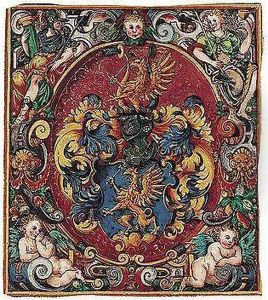Gabriel Glockendon Paintings
Gabriel Glockendon was a notable figure in the realm of art during the 16th century, born in the 1490s and passing away in 1553. He was part of the Glockendon family, a dynasty of artists and printers that played a significant role in the cultural and artistic landscape of Nuremberg, Germany, during the Renaissance period. The Glockendon family, including Gabriel, were renowned for their contributions to manuscript illumination, printing, and engraving, indicating a broad range of skills and interests within the visual arts.
Gabriel's work is particularly associated with manuscript illumination, a field in which he excelled and produced numerous works that were highly valued during his lifetime and remain of interest to art historians today. His style was characterized by intricate detail, vibrant colors, and a distinctive blend of Gothic and Renaissance elements, reflecting the transitional period in which he lived. This blend of styles made his works particularly appealing to patrons and collectors of the time, who sought pieces that reflected contemporary tastes while still honoring traditional forms.
Despite the prominence of the Glockendon family and Gabriel's own contributions to the art world, detailed records of his life are somewhat limited, as is common with many artists of the period. However, surviving works attributed to him and historical references to the Glockendon family in Nuremberg's archives provide insight into his artistic achievements and significance. Gabriel's legacy is also preserved through the works of his relatives, including other members of the Glockendon family, who continued to be active in the arts and printing well after his death.
Gabriel Glockendon's contributions to manuscript illumination and the broader field of Renaissance art in Germany underscore the importance of familial artistic dynasties and their role in shaping the cultural heritage of their time. Through his work, he not only contributed to the beauty and richness of Renaissance art but also helped lay the groundwork for future generations of artists in Nuremberg and beyond. His life and work remain subjects of interest for art historians and enthusiasts who seek to understand the complexities and nuances of 16th-century art in Germany.
